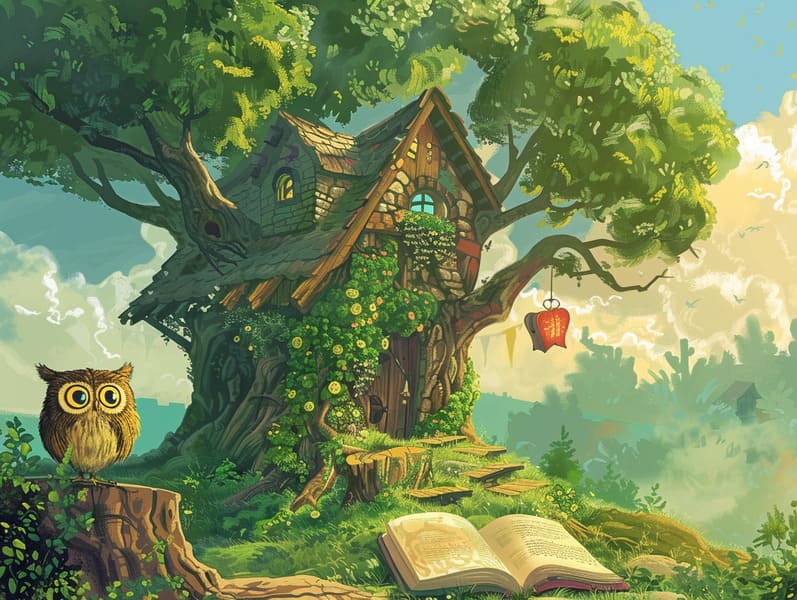A Brief History of Popular Fairy Tales and the Unfading Grandeur.
A Brief History of Popular Fairy Tales and the Unfading Grandeur.
Blog Article

Legendary fairy tales have ancient roots. These stories have been conveyed from one generation to the next millennia before they were ever transcribed. They arose from a variety of societies, including Indigenous traditions. They were initially transmitted among elders, often carrying themes and messages concerning the societal norms and beliefs of the time.
The Grimm brothers, Jacob and Wilhelm Grimm, were among the first to compile and publish many of these beloved narratives. Their volume, "Grimm's Fairy Stories," included tales like "The Story of Cinderella," "Little Brother and Little Sister," and "Snow White," which have since become essentials in the world of beloved fairy tales. Similarly, the Danish author's charming tales, such as "The Sea Maid," and "The Duckling that Could," have gained the love worldwide, solidifying their place in the pantheon of classic fairy tales.
Despite their ancient origins, these stories remain as meaningful as ever, especially as bedtime stories for kids. These delightful tales are now available in many formats, including vividly illustrated books, delightful animations, and internet fairy tales.
Their persistent charm can be credited to several captivating elements:
Life Lessons: Timeless fairy tales often share important moral lessons. Narratives like "The Tale of the Boy Who Cried Wolf" teach the benefit of integrity, while "The Tortoise and the Hare" emphasize the traits of perseverance and unpretentiousness. These stories offer the young clear distinctions between right and wrong, molding their moral compass in a subtle yet deep way.
Empathy and Understanding: Fairy tales frequently illustrate figures facing tests and troubles, urging readers to comprehend with their struggles and rally behind their triumphs. For instance, "Beauty and Her Beast" teaches us the value of seeing beyond the surface to perceive the inner being of a person, building understanding and knowledge.
Cultural Insights: Many fairy tales are deeply embedded in the cultural contexts from which they originated. Immersing in these fairy tales can provide illuminating insights into different traditions, building a sense of world understanding and understanding.
Creativity and Fantasy: The supernatural elements in fairy tales—mythical creatures—motivate children’s imaginations. These stories lead readers to extraordinary realms, inspiring innovative thinking and a sense of amazement that remains a lifetime.
Old fairy tales are not only alluring but also teaching. They serve as captivating tools in nurturing various thinking and feeling skills in young ones. When ancient fairy tales are read aloud, they promote verbal development by showing new phrases and complex sentence structures. This practice also cultivates listening skills and focus, as the young listen intently, expectant to see what happens next.
Furthermore, deliberating the themes and characters of traditional fairy tales can foster reasoning skills and analytical skills. Kids are taught to pinpoint patterns, foresee events, and understand cause and effect. These examinations also ease little ones express their thoughts and feelings, nurturing their emotional intelligence.
In today’s digital era, the abundance of internet fairy tales has made these fairy tales more attainable than ever. Online resources and digital apps offer comprehensive collections of old fairy tales that can be read or listened to anytime, anywhere. Fairy tales read aloud are particularly sought after, providing an fascinating method for children to immerse in these captivating stories. Voice books and read-to-me stories take characters and settings to life, often complemented by fantastical audio effects and melodies that boost the tale journey.
The persistent attraction of traditional fairy tales lies in their ability to adjust to modern society while holding onto their underlying messages. Contemporary versions of these stories often present more different protagonists and modern settings, making them accessible to today’s audience. However, the central morals of fortitude, benevolence, and rightness remain unchanged, continuing to influence audiences of all get more info ages.
Ancient fairy tales also offer a sense of warmth and comprehensibility. They bestow a tidy narrative with a apparent beginning, middle, and end, often winding up with the conclusion of conflicts and the triumph of virtue over wickedness. This dependability can be solacing for kids, granting a sense of reliability in an fluctuating world.
Old fairy tales continue to fascinate and edify new generations, maintaining their majesty and relevance in modern society. As children's bedtime stories, they put forth a perfect blend of magic and knowledge, encouraging moral values, empathy, and creativity. The proliferation of web-based fairy tales and the well-liked nature of fairy tales narrated ratify that these old narratives remain obtainable to new generations.
By safeguarding and passing on these stories, we continue to cherish the rich tapestry of creativity and cultural heritage. Whether you are browsing a vividly illustrated book, browsing a web-based collection, or listening via an read-aloud story, the radiance of ancient fairy tales is always within reach. These narratives highlight of the unending impact of stories and its ability to bond us across centuries and lands.
Even if you are viewing a artistically illustrated book, exploring a online collection, or playing an sound book, the grandeur of classic fairy tales is always within reach.
These fairy tales emphasize of the continued strength of storytelling and its ability to connect us across time and space, forging a link that captivates and teaches alike.